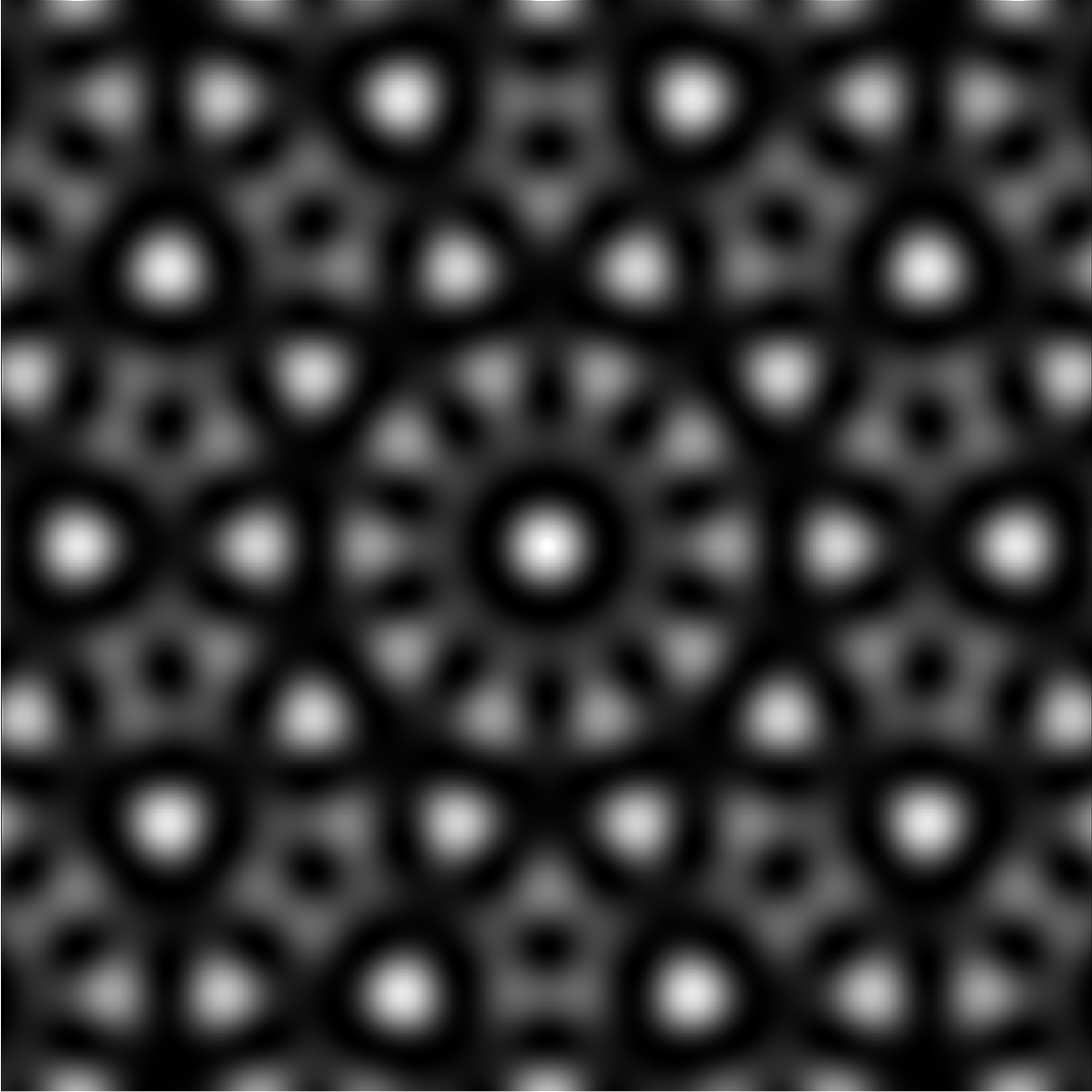Ultracold Atoms in an Optical Quasicrystalline Potential
A quasicrystal is an aperiodic crystal with a rotational symmetry that is mathematically forbidden in a periodic crystal. One related example is found in the Penrose tiling, which exhibits local five-fold rotation symmetry, a symmetry that cannot exist in a system with translation symmetry. The standard mathematical analysis techniques used to understand the behavior of periodic crystals does not work for quasicrystals due to a lack of translation symmetry. Quasicrystals are thought to exhibit anomalous and, potentially, topological transport properties that are thus difficult to understand analytically.
In the Brown Group, we trap degenerate quantum gasses of lithium in a two-dimensional optical potential that exhibits five-fold and ten-fold rotation symmetries, thus creating a quantum quasicrystal with a deep connection to the Penrose tiling. We explore the effects of geometry and topology in the quantum behavior of Penrose-like quasicrystals and how these effects lead to exotic transport properties.



